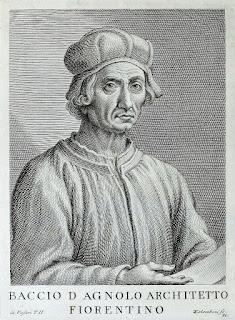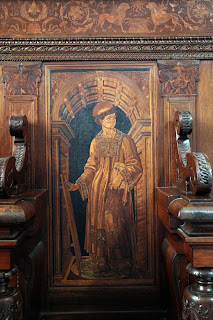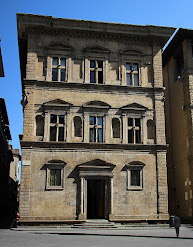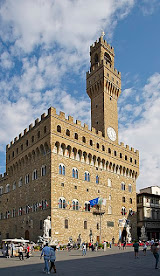Girolamo Savonarola executed
Death of the friar who was to inspire best-selling novel by Tom Wolfe
The hellfire preacher Girolamo Savonarola was hanged and burned on this day in 1498 in Piazza della Signoria in Florence. By sheer force of personality, Savonarola had convinced rich people to burn their worldly goods in spectacular bonfires in Florence during 1497, but within a year it was Savonarola’s burning corpse that the crowds turned out to see. Savonarola had become famous for his outspoken sermons against vice and corruption in the Catholic Church in Italy and he encouraged wealthy people to burn their valuable goods, paintings and books in what have become known as ‘bonfires of the vanities.’ This phrase inspired Tom Wolfe to write The Bonfire of the Vanities, a novel about ambition and politics in 1980s New York. Savonarola was born in 1452 in Ferrara. He became a Dominican friar and entered the convent of Saint Mark in Florence in 1482. He began preaching against corruption and vice and prophesied that a leader would arrive from the north to punish Italy and reform the church. When Emperor Charles VIII invaded from the north many people thought Savonarola’s prediction was being fulfilled. Read more…
______________________________________
Ferdinando II de’ Medici – Grand Duke of Tuscany
Technology fan who supported scientist Galileo
Inventor and patron of science Ferdinando II de’ Medici died on this day in 1670 in Florence. Like his grandmother, the dowager Grand Duchess Christina, Ferdinando II was a loyal friend to Galileo and he welcomed the scientist back to Florence after the prison sentence imposed on him for ‘vehement suspicion of heresy’ was commuted to house arrest. Ferdinando II was reputed to be obsessed with new technology and had hygrometers, barometers, thermometers and telescopes installed at his home in the Pitti Palace. He has also been credited with the invention of the sealed glass thermometer in 1654. Ferdinando II was born in 1610, the eldest son of Cosimo II de’ Medici and Maria Maddalena of Austria. He became Grand Duke of Tuscany in 1621 when he was just 10 years old after the death of his father. His mother, Maddalena, and paternal grandmother, Christina, acted as joint regents for him. Christina is said to have been the power behind the throne until her death in 1636. Ferdinando II was patron and friend to Galileo, who dedicated his work, Dialogue Concerning the two Chief World Systems, to him. Read more…
_____________________________________
Giuseppe Parini – writer
Satirist avenged bad treatment though his poetry
Poet and satirist Giuseppe Parini was born on this day in 1729 in Bosisio in Lombardy. A writer associated with the Age of Enlightenment in Europe, he is remembered for his series of Horatian odes and for Il giorno - The Day - a satirical poem in four books about the selfishness and superficiality of the aristocracy in Milan. The son of a silk trader, Parini was sent to Milan to study under the religious order, the Barnabites. In 1752 his first volume of verse introduced him to literary circles and the following year he joined the Milanese Accademia dei Trasformati - Academy of the Transformed - which was located at the Palazzo Imbonati in the Porta Nuova district. He was ordained a priest in 1754 - a condition of a legacy made to him by a great aunt - and entered the household of Duke Gabrio Serbelloni at Tremezzo on Lake Como to be tutor to his eldest son. Parini was unhappy there and felt he was badly treated, but he twice got his revenge on his employer through his writing. In 1757 he wrote his Dialogo sopra la nobilità, a discussion between the corpse of a nobleman and the corpse of a poet about the true nature of nobility. Read more…
______________________________________
Sergio Gonella - football referee
First Italian to referee a World Cup final
Sergio Gonella, the first Italian football referee to take charge of a World Cup final, was born on this day in 1933 in Asti, a city in Piedmont best known for its wine production. Gonella was appointed to officiate in the 1978 final between the Netherlands and the hosts Argentina in Buenos Aires and although he was criticised by many journalists and football historians for what they perceived as a weak performance lacking authority, few matches in the history of the competition can have presented a tougher challenge. Against a backcloth of political turmoil in a country that had suffered a military coup only two years earlier and where opponents of the regime were routinely kidnapped and tortured, or simply disappeared, this was Argentina’s chance to build prestige by winning the biggest sporting event in the world, outside the Olympics. Rumours of subterfuge surrounded most of Argentina’s matches and when the final arrived the atmosphere in the stadium was as intimidating as anything Gonella would have experienced in his whole 13-year professional career. The match began with an unprecedented delay, caused first by the Argentine team’s deliberate late arrival on the field. Read more…
_____________________________________
Book of the Day: The Burning of the Vanities: Savonarola and the Borgia Pope, by Desmond Seward
'The city will no longer be a place of flowers, but an abode of robbery, of evil doing, of bloodshed.' This is the dramatic story of Girolamo Savonarola, the visionary friar who terrified Renaissance Florence by his uncannily accurate prophecies of doom - especially of a new barbarian invasion from Charles VIII - and denounced Lorenzo the Magnificent as a tyrant and the Borgia Alexander VI as an unworthy pope. He became virtual ruler of Florence, restoring republican government, and burning 'profane art' in public bonfires, most notably in the famous 'Bonfire of the Vanities' in 1497. The years when he dominated the city are among the most dramatic and tragic in Florentine history, and his supporters included: Michelangelo, Botticelli and Machiavelli. But, in the end, Alexander VI turned the Florentines against Savonarola and destroyed him. They stormed his friary, and after a mockery of a trial during which he was tortured and condemned as a heretic, he went to the stake. In The Burning of the Vanities, Desmond Seward tells the extraordinary story of the man who, even after his death, became a cult figure.Desmond Seward was born in Paris and educated at Cambridge University. He is the author of numerous books, including biographies of Henry IV of France, Eleanor of Aquitaine, Marie Antoinette, Empress Eugenie and Napoleon's Family.












.jpg)

.jpg)
.jpg)






.jpg)
.jpg)














.jpg)

